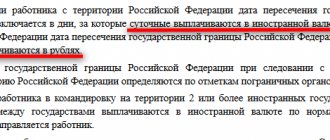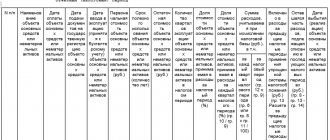New edition of Art. 129 Labor Code of the Russian Federation
Wages (employee remuneration) - remuneration for work depending on the qualifications of the employee, complexity, quantity, quality and conditions of the work performed, as well as compensation payments (additional payments and allowances of a compensatory nature, including for work in conditions deviating from normal, work in special climatic conditions and in areas exposed to radioactive contamination, and other compensation payments) and incentive payments (additional payments and incentive allowances, bonuses and other incentive payments).
Part two became invalid on September 1, 2007.
Tariff rate is a fixed amount of remuneration for an employee for performing a standard of work of a certain complexity (qualification) per unit of time, without taking into account compensation, incentives and social payments.
Salary (official salary) is a fixed amount of remuneration for an employee for the performance of labor (official) duties of a certain complexity for a calendar month, excluding compensation, incentives and social payments.
Basic salary (basic official salary), basic wage rate - minimum salary (official salary), wage rate of an employee of a state or municipal institution carrying out professional activities in the profession of a worker or position of an employee, included in the corresponding professional qualification group, excluding compensation, incentives and social payments.
Commentary on Article 129 of the Labor Code of the Russian Federation
The Labor Code of the Russian Federation in Article 129 gives different definitions of the terms “remuneration” and “wages”. In particular, remuneration is understood as a system of relations related to ensuring that the employer establishes and makes payments to employees for their work in accordance with laws, other regulations, collective agreements, agreements, local regulations and employment contracts.
At the same time, wages are remuneration for work depending on the employee’s qualifications, complexity, quantity, quality and conditions of the work performed, as well as compensation and incentive payments.
As you can see, the concept of “remuneration” is much broader than the concept of “wages”. Remuneration includes not only the payroll system, but also the modes used, the rules for using and documenting working time, the labor standards used, and the terms of payment of wages.
During the transition to a market economy, Russian legislation establishes for hired workers the principle of remuneration for work without any discrimination and not below the minimum established by federal law. This principle is enshrined in Article 37 of the Constitution of the Russian Federation and reflects the basic principles of remuneration in the country. The labor income of each employee is determined by his personal contribution, taking into account the final results of the organization's work, is regulated by taxes and is not limited to maximum amounts.
Payment for work, being determined by the nature of social production, predetermines the legal mechanism for distributing the product of labor between the employee and the employer. This distribution is characterized by the following points. Firstly, part of the product is distributed in accordance with the amount of labor given by the worker in the production process. This ensures that workers are interested in the fullest, most intensive and productive use of their working time. Secondly, highly qualified labor is paid higher than unskilled labor with the same amount of working time, which motivates workers to improve their qualifications, general educational level and professional skills. Thirdly, work in difficult and harmful conditions is rewarded financially at a higher rate compared to work in ordinary (normal) conditions. This provides material compensation for additional labor costs.
Remuneration for persons working under an employment contract is carried out in the form of wages. The Labor Code of the Russian Federation in Article 129 establishes the legal determination of wages.
Wages (employee remuneration) - remuneration for work depending on the qualifications of the employee, complexity, quantity, quality and conditions of the work performed, as well as compensation payments (additional payments and allowances of a compensatory nature, including for work in conditions deviating from normal, work in special climatic conditions and in areas exposed to radioactive contamination, and other compensation payments) and incentive payments (additional payments and incentive allowances, bonuses and other incentive payments).
As you can see, labor legislation also includes compensation and incentive payments in the concept of wages. Incentive payments include bonuses and various types of allowances. Compensation payments are designed to reimburse the employee for expenses incurred in connection with the performance of his work duties.
In order to take into account the qualifications of the employee, tariff systems of remuneration are used, which establish a relationship between the tariff rate (the amount of remuneration of the employee for fulfilling the labor standard per unit of time) and the qualification category of the employee. Taking into account working conditions is expressed in the establishment of various types of additional payments that increase coefficients for work in special working conditions or in conditions deviating from normal (for example, regional coefficients that are used for persons working in the Far North, or additional payments for overtime work).
Legal regulation of wages is characterized by a combination of centralized, contractual and local regulation.
The minimum wage, tariff rates and official salaries in the public sector, the procedure for remuneration in case of deviation from normal working conditions, the procedure for calculating average earnings, and guarantees in the field of remuneration are determined in a centralized manner. The system of basic state guarantees of wages includes, for example, limiting the list of grounds and amounts of deductions from wages; restriction on payment of wages in kind, etc.
Contractual regulation of wages is carried out in two forms - collective contractual and individual contractual. Collective contractual regulation of wages is carried out on the basis of collective agreements and agreements. According to Article 41 of the Labor Code of the Russian Federation, the content of a collective agreement may include forms, systems and amounts of remuneration, payment of benefits and compensation, a mechanism for regulating remuneration taking into account rising prices, inflation levels, fulfillment of indicators determined by the collective agreement, and some other issues. As a rule, collective bargaining agreements and agreements establish additional benefits and compensation for employees.
Individual contractual regulation is carried out at the employee-employer level. It is in the employment contract that the price of labor for each specific employee is determined. In accordance with Article 57 of the Labor Code of the Russian Federation, remuneration is an essential condition of the employment contract.
Local acts of the organization, as a rule, establish remuneration systems, tariff rates and salaries (with the exception of public sector organizations), additional payments and allowances to tariff rates (salaries), bonus systems, increased wages when performing work in conditions deviating from normal, labor standards.
These conditions may be enshrined in the regulations on wages, regulations on bonuses and other local acts.
The employee’s salary is established by the employment contract in accordance with the current employer’s remuneration systems.
Remuneration systems, including tariff rates, salaries (official salaries), additional payments and allowances of a compensatory nature, including for work in conditions deviating from normal, systems of additional payments and incentive allowances and bonus systems are established by collective agreements, agreements, local regulations acts in accordance with labor legislation and other regulatory legal acts containing labor law norms.
With time-based (tariff) wages, the employee’s earnings are determined based on the time actually worked and the tariff rate (salary). The tariff rate refers to the amount of remuneration for work of a certain complexity produced per unit of time (hour, day, month).
According to Article 129 of the Labor Code of the Russian Federation, the tariff system of remuneration is a set of standards that make it possible to differentiate the wages of workers of different categories.
Tariff schedule is a set of tariff categories (professions, positions), determined depending on the complexity of the work and the qualifications of workers using tariff coefficients.
Tariff coefficients of the Unified Tariff Schedule were approved by Decree of the Government of the Russian Federation of April 29, 2006 N 256 “On the size of the tariff rate (salary) of the first category and on inter-category tariff coefficients of the Unified Tariff Schedule for remuneration of employees of federal government institutions.”
The main types of time-based wages are simple time-based and time-based bonus wages.
With a simple time-based remuneration system, the basis for calculating the amount of an employee’s remuneration is the tariff rate or official salary in accordance with the organization’s staffing table and the amount of time worked by the employee. If during a month an employee has worked all working days, then the amount of his earnings will correspond to his official salary, but if not all working hours have been worked, then wages will be accrued only for the time actually worked.
Example.
The salary for a systems technician is 10,000 rubles. In November 2007, he worked 17 working days (the number of working days in November was 21). Therefore, his earnings for November will be:
10,000 rub.: 21 days. x 17 days = 8095.24 rub.
Some organizations use hourly and daily wage systems as variations of the time system. In this case, the employee’s earnings are determined by multiplying the hourly (daily) wage rate by the number of hours (days) actually worked.
Time-based bonus payment provides for the accrual and payment of a bonus, set as a percentage of the official salary (tariff rate) on the basis of a regulation developed in the organization on bonuses for employees, a collective agreement or an order (instruction) of the head of the organization.
Example.
In August 2007, the head of the transport department should be paid a bonus in the amount of 20% of the official salary (15,000 rubles).
In this case, his earnings for August will be:
15,000 rub. + 15,000 rub. x 20% = 18,000 rub.
The time-based remuneration system, as a rule, is used when remunerating the management personnel of an organization, employees of auxiliary and service industries, as well as persons working part-time.
With piecework wages, earnings are accrued to the employee based on the final results of his work, which encourages workers to increase labor productivity. In addition, with such a remuneration system, there is no need to control the appropriateness of employees’ use of working time, since each employee, like the employer, is interested in producing more products.
The basis for calculating piecework wages is the piecework rate, which represents the amount of remuneration to be paid to the employee for producing a unit of product or performing a certain operation.
Depending on the method of calculating earnings, the piecework wage system is divided into direct piecework, progressive piecework, indirect piecework, and chord-based.
With a direct piece-rate wage system, the employee is remunerated for the work actually performed (manufactured products) at established piece-rate rates. That is, the salary is determined by multiplying the piece rate by the number of products produced (work performed, services rendered).
Example.
The organization has established direct piecework wages. In October, an employee produced 500 units of products in a month. The piece rate per unit of production is 17 rubles. Consequently, the employee’s earnings for October were: 500 units. x 17 rub./unit = 8500 rub.
With a piece-rate progressive wage system, an employee’s earnings for producing products within the established norm are determined at established piece rates, and for producing products in excess of the norm - at higher rates.
A prerequisite for the employee in this case is to ensure some initial level of output, called the norm.
Please note: piece rates can increase gradually depending on the level of exceeding standards in accordance with the pricing scale adopted by the enterprise.
Example.
Let's use the conditions of the previous example. However, let’s assume that the organization has established piecework-progressive wages.
So, the employee produced 500 units of products in a month. Piece price per unit of production: up to 300 units - 17 rubles, from 300 to 400 units - 19 rubles, over 400 units - 21 rubles. An employee's monthly salary is calculated in the following order:
300 units x 17 rub./unit + 100 units x 19 rub./unit + 100 units x 21 rub./unit = 9100 rub.
With a piece-rate bonus system, workers are additionally awarded a bonus based on the indicators established by the Regulations on Bonuses (quality of work, urgency of its completion, absence of complaints from clients, etc.). The size of the bonus is set as a percentage of piecework earnings.
Thus, an employee’s wages consist of piecework earnings, calculated on the basis of prices and the quantity of products produced, and bonuses.
Example.
Let's use the conditions of the two previous examples. Let us assume that the organization uses a piece-rate wage system. Let’s say that the Regulations on Bonuses provide for a 20 percent bonus for fulfilling the norm. The production rate is 500 units.
The employee’s salary in this case will be:
500 units x 17 rub./unit = 8500 rub.
Bonus: 8500 rub. x 20% = 1700 rub.
The employee's total earnings amounted to 10,200 rubles. (8500 rub. + 1700 rub.).
The indirect piece-rate wage system is usually used for workers performing auxiliary work in servicing the main production.
This system is based on the fact that the salary of an auxiliary worker is determined as a percentage of the earnings of the main production workers he serves.
Example.
An employee engaged in auxiliary work is credited with 60% of the earnings of workers in the main production. If the earnings of workers in the main production for the month amounted to 10,000 rubles, then the employee engaged in auxiliary work will be credited with 6,000 rubles. (RUB 10,000 x 60%).
The lump sum system of remuneration assumes that for an employee (team of workers) the amount of remuneration is established for a set of works, and not for a specific production operation.
Example.
A workshop worker assembles a product that consists of three parts, which are also manufactured by this worker. The price for making one product is 200 rubles. Within a month, the worker produced 180 parts, but assembled only 50 products. The amount of his earnings will be determined based on the number of collected products and the established piece rate per unit of product. It will be 10,000 rubles. (200 rub./ed. x 50 ed.).
Depending on the method of labor organization, piecework wages are divided into individual and collective (team).
With individual piecework wages, the employee’s remuneration for his work depends entirely on the quantity of products produced individually, its quality and piecework rates.
With collective (team) piecework wages, the earnings of the entire team are determined taking into account the actual work performed and its price, and the payment for each employee of the team (team) depends on the volume of products produced by the entire team and on the quantity and quality of his work in the total volume of work.
Currently, remuneration on a commission basis is widely used in organizations that provide services to the public, carry out trade operations, for employees of sales departments, foreign economic service of the organization, and advertising agents. The employee’s earnings for fulfilling his job duties are determined in the form of a fixed (percentage) income from the sale of products.
Example.
The salary of an employee involved in the sale of cosmetics is set by agreement of the parties (the employee and the organization’s administration) at 10% of the actual volume of products sold. If during a month an employee sold products worth 100,000 rubles, then his monthly earnings will be 10,000 rubles. (RUB 100,000 x 10%).
There are many types of commission forms of remuneration that link the remuneration of employees to the performance of their activities. The choice of a specific method depends on what goals the organization is pursuing, as well as on the characteristics of the product being sold, the specifics of the market and other factors.
For example, if an organization seeks to maximize total sales, then, as a rule, commissions are set as a fixed percentage of sales volume.
If an organization has several types of products and is interested in intensively promoting one of them, then it can set a higher commission percentage for this type of product.
If an organization seeks to increase production capacity utilization, then it is necessary to direct employees to sell the maximum number of units of product, for which a fixed amount of money can be established for each unit of product sold.
To ensure the stable operation of the entire organization, remuneration for employees of the sales department can be made in the form of a fixed percentage of the base salary when the implementation plan is fulfilled.
Article 131. Forms of remuneration
Payment of wages is made in cash in the currency of the Russian Federation (in rubles).
In accordance with a collective agreement or an employment contract, upon a written application from an employee, remuneration may be made in other forms that do not contradict the legislation of the Russian Federation and international treaties of the Russian Federation. The share of wages paid in non-monetary form cannot exceed 20 percent of the accrued monthly wage.
Payment of wages in bonds, coupons, in the form of promissory notes, receipts, as well as in the form of alcoholic beverages, narcotic, poisonous, harmful and other toxic substances, weapons, ammunition and other items in respect of which prohibitions or restrictions on their free circulation are established , not allowed.
back to contents










